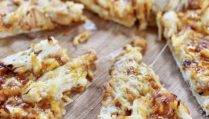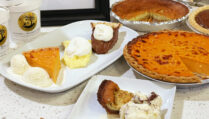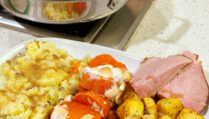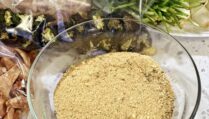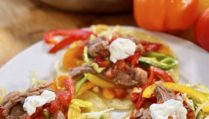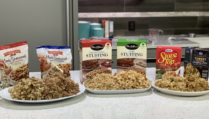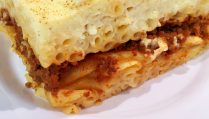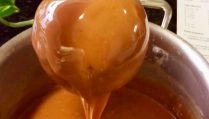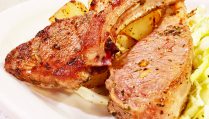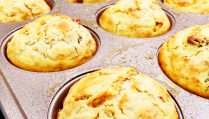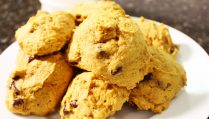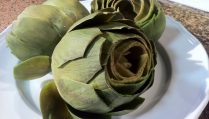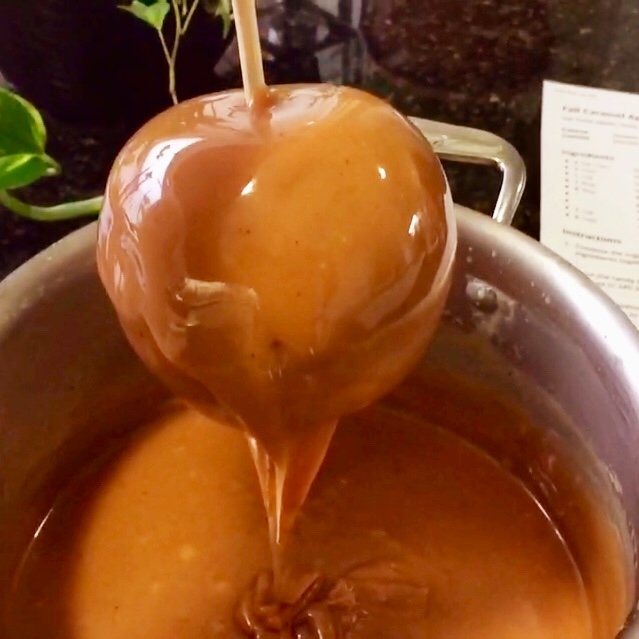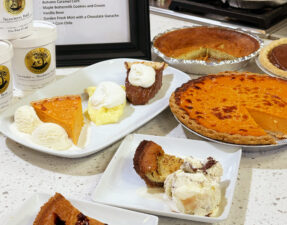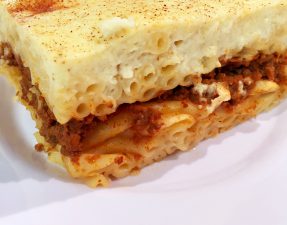The sweet, sticky confection known as caramel dates back to the early 1700’s. However, some historians believe a sales person (Dan Walker) for Kraft Corporation created the idea for the caramel apple in the 1950’s. This isn’t true at all. What Kraft Corporation did do back in the 1950’s was print a recipe for a caramel apple on the package of their individually wrapped caramels. This marketing strategy paid off and pushed the caramel apple into mainstream society.
The almighty sweet tooth pushed caramel into mass production in the 1800‘s at which time people started dipping more than apples into their caramel. However, civilizations have always had a desire for sweet foods. Honey, sugars, wines, cakes and confections lost to time were popular mainstream treats for millennia. To believe we have a corner on the market for caramel apples is an outdated way of thinking.
Caramel is nothing more than burned sugar. This culinary technique is used in many applications. Meats, vegetables, breads, and pastries can all be caramelized. But when one thinks of caramel…a dark brown, chewy, sweet, delicious image comes to mind. With just a few simple ingredients a wonderful confectionary treat can be made.
When working with hot sugar solutions, the first thing to remember is they BURN. Boiling hot sugar is not a safe confection to work with if you have kids running around. When I make caramel, I clear any distractions and focus on the candy (temperatures, weights, ingredients, times…). Prep everything you will need first before you get started with your caramel apples. Choose firm, sour apples like granny smiths to dip in your caramel. The sweet and sour combination is wonderful.
Caramel for dipping apples has a high fat percentage to help it hold together on the apples. Start by combining heavy cream, sugar, corn syrup, and vanilla in a heavy pan. Using a wooden spoon, mix the ingredients together. Lightly stir the mixture until it comes to a boil. At this point leave it alone. Most people keep stirring the mixture which causes the sugars to re-crystallize. At sea level you cook caramel to 240 degree’s Fahrenheit. Since we live about 4300 feet above sea level in Salt Lake City, subtract 2 degree’s for every 1000 feet above sea level. With this in mind don’t cook your caramels above 231-232 degree’s if you live in Salt Lake City or else they will be too firm.
When your caramel reaches the appropriate temperature, stir in the butter and and pour the caramel into a 9×13 cake pan that has been buttered. Mistake number 2 is generally made at this point. Like you, I’ve been taught to be frugal and not waste things but DON’T scrape the pan out. When pouring the caramel into your prepared pan, simply pour it in and when there’s no more to pour…stop. The scraping action to get the last bit may cause crystallization of the sugar and ruin your entire batch of caramel. For successful caramel be sure to use heavy cream, don’t stir it once it comes to a boil, and don’t scrape the pan out. If you must salvage that last tablespoon of caramel from the pan, than scrape it out and put that last bit in a different bowl. For a complete caramel recipe go to my website www.cookingwithchefbryan.com.

